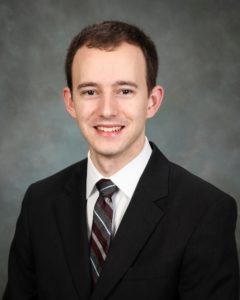Course Director: Dr. Thomas Overbye
Course Date: November 19 – 21, 2019
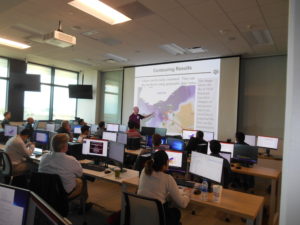
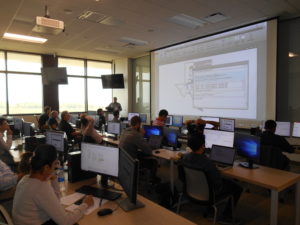
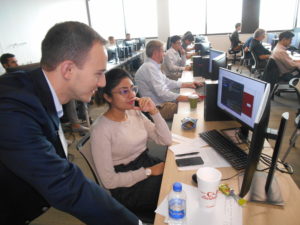
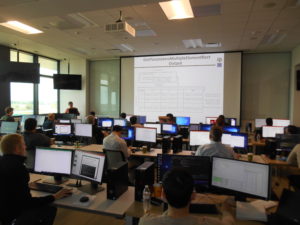
Description
Automation capabilities of modern power systems software allow efficient scaling-up and customizing of analysis and planning studies to multiply the value of engineers’ time. The purpose of this short course is to provide a comprehensive coverage of using the Python programming language to automate the functionality of PowerWorld Simulator. PowerWorld’s multiple features enabling automation include a text-based data and scripting language and a common object model (COM) server, SimAuto, which provides access to almost all functions and data of the program. As a high-level interpreted programming language with extensive built-in and freely-available libraries, Python is excellently suited for interfacing with PowerWorld to script simulations and automate studies. The course will include extensive hands-on experience, guided towards developing solutions for automating customized steady-state and transient simulations, and making interactive interface tools. (Hours: CEU 1.8, PDH 18)
Who Should Attend
This 2.5 day course is designed to provide a comprehensive coverage of using the Python programming language to automate power system studies in PowerWorld. It is ideally suited for electrical engineers who work in electric grid planning or operations, and for new graduates who would like to rapidly gain experience with automating PowerWorld studies through Python. The course will also be useful for researchers in the electric power area, including academics and graduate students, who are interested in automating and customizing their research studies with Python and PowerWorld. Some prior knowledge of PowerWorld software and some computer programming skills are recommended; however, the course is designed for those who do not necessarily have prior experience with Python specifically or of advanced PowerWorld features like SimAuto.
Topics
- Power system modeling using PowerWorld
- Introduction to Python including installation, overall architecture, basic syntax, and key data structures
- Python development environment with PyCharm and the python package installer
- Scripting and exchanging data with PowerWorld using auxiliary text files
- Automatically creating one-line diagrams with PowerWorld auxiliary display files
- Setting up the PowerWorld automation server SimAuto and exploring object types
- Passing data between PowerWorld and Python code with SimAuto
- Automating steady-state simulations with SimAuto including NERC TPL studies
- PowerWorld case comparisons using Python
- Automating transient stability simulations with SimAuto
- Creating user interfaces with the appJar library
- Making Matlab-like figures and plots with Matplotlib
- Distributed computing using SimAuto with Python networking libraries
- Setting up a Python-based client to PowerWorld DynamicsStudio (DS)
Instructors
Tom Overbye
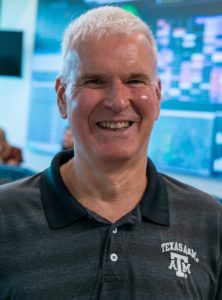
Tom Overbye is a TEES Eminent Professor in the Department of Electrical and Computer Engineering at Texas A&M University (TAMU). He received his BS, MS, and Ph.D. degrees in Electrical Engineering from the University of Wisconsin-Madison. Before starting his academic career he was employed with Madison Gas and Electric Company, working in their planning and operations departments. He is the original developer of PowerWorld Simulator (a widely used power system planning tool), a co-founder of PowerWorld Corporation, and an author of a widely used Power System Analysis and Design book. He is a recipient of the IEEE Power and Energy Society Outstanding Power Engineering Educator Award, an EEE Fellow, a member of the US National Academy of Engineering, and was responsible for the initial development of dynamics analysis in PowerWorld Simulator.
Adam Birchfield
Adam Birchfield is with Birchfield Consulting LLC. He received the B.E.E. degree in 2014 from Auburn University, the M.S. degree in 2016 from the University of Illinois at Urbana-Champaign, and the Ph.D. degree in 2018 from Texas A&M University, all in electrical engineering. His research is in the area of power system modeling and computational analysis, including dynamics and stability, synthetic power grids, visualization, and high-impact, low-frequency events. He has extensive experience in the use of Python, including developing many PowerWorld applications.
Caroline Marzinzik
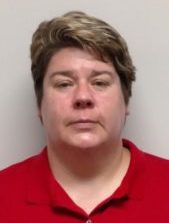
Caroline Marzinzik is a Software Engineer and Senior Consultant at PowerWorld Corporation. She received B.S. and M.S. degrees in Electrical and Computer Engineering from the University of Illinois at Urbana-Champaign in 1994 and 1996. She has been employed at PowerWorld Corporation since 2004 where her duties include software development, customer support, and software training for the PowerWorld Simulator power system analysis tool. Caroline started her career in power systems at Mid-America Interconnected Network, Inc. (MAIN), a former NERC reliability region, where she was employed from 1996 to 2004. While at MAIN she contributed to the development and maintenance of MAIN’s regional Available Transfer Capability (ATC) calculation process and performed seasonal transmission assessment studies.
Tracy Rolstad
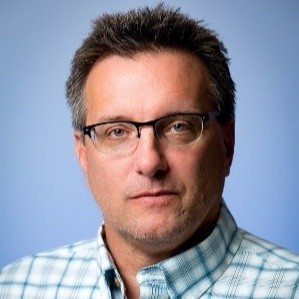
Tracy Rolstad is a Technical Director for Power System Consultants (PSC North America in Kirkland, WA). He received his BSEE from the University of Idaho and a graduate diploma from the Naval War College (College of Naval Command and Staff). He started his career in power systems as a Reactor Operator and Engineering Watch Supervisor in the United States Navy (onboard USS Hawkbill) serving 22 years in the Navy and Navy Reserve. His experience in power system planning and modeling began at the Joint Warfare Analysis Center and then developed and evolved at the Bonneville Power Administration (technical operations), as a Principal Engineer at Utility System Efficiencies, as a Consulting Engineer at Avista Utilities, and now as a Technical Director for Power System Consultants. Tracy presently serves as the Western Electricity Coordinating Council (WECC) Data Subcommittee Chair and as a member of the WECC Reliability Assessment Committee (RAC) governing body. He has served as the WECC Technical Studies Subcommittee Chair, Vice-Chair, and Secretary. Additionally, he served as the WECC RAS and Relay Workgroup Chair addressing modeling issues related to 2011 AZ to CA outage. He is a member of the IEEE, the VFW and serves as a member of the College of Engineering Advisory Board for the University of Idaho.

